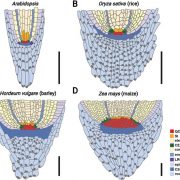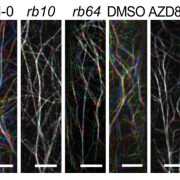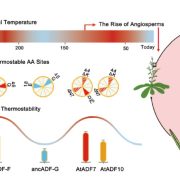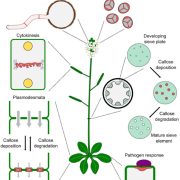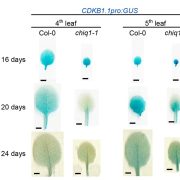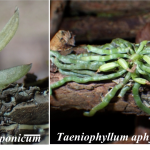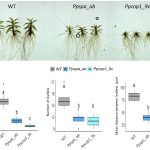Cortical microtubules contribute to division plane positioning during telophase in maize
 During plant cell division, the new cell wall is built along a plant-specific structure named the phragmoplast. The phragmoplast is a complex array of microtubules and microfilaments that originates at the middle of the cell and expands outwards to the division site at the cell cortex. The proper orientation of the cell division depends upon the phragmoplast precisely reaching to the designated division site. However, it is not fully understood what guides the phragmoplast to reach the correct location. In this recent study, Bellinger et al. discovered that a microtubule binding protein named TANGLED1 (TAN1) facilitates the proper orientation of the phragmoplast in maize epidermal cells. They found that microtubules accumulate at the cortex during telophase, in an abundant and organized manner, before the phragmoplast contacts the cortex. In the tan1 mutant, which has phragmoplast orientation defects, the cortical microtubules are arranged in a more variable way. Previously, TAN1-YFP has been shown to form discrete puncta at the cortical division site during telophase. In this study, the authors found that cortical-telophase microtubules interact with stable TAN1 puncta at the division site, and remain near the TAN1 puncta longer than other regions, which suggests that TAN1 facilitates the pausing and capturing of cortical microtubules near the division site. A future direction would be to identify the factors that modulate the targeting of TAN1 to the division site. (Summary by Xiaohui Li @Xiao_hui_Li, and edited by Carolyn Rasmussen @carolynplants) Plant Cell 10.1093/plcell/koad033
During plant cell division, the new cell wall is built along a plant-specific structure named the phragmoplast. The phragmoplast is a complex array of microtubules and microfilaments that originates at the middle of the cell and expands outwards to the division site at the cell cortex. The proper orientation of the cell division depends upon the phragmoplast precisely reaching to the designated division site. However, it is not fully understood what guides the phragmoplast to reach the correct location. In this recent study, Bellinger et al. discovered that a microtubule binding protein named TANGLED1 (TAN1) facilitates the proper orientation of the phragmoplast in maize epidermal cells. They found that microtubules accumulate at the cortex during telophase, in an abundant and organized manner, before the phragmoplast contacts the cortex. In the tan1 mutant, which has phragmoplast orientation defects, the cortical microtubules are arranged in a more variable way. Previously, TAN1-YFP has been shown to form discrete puncta at the cortical division site during telophase. In this study, the authors found that cortical-telophase microtubules interact with stable TAN1 puncta at the division site, and remain near the TAN1 puncta longer than other regions, which suggests that TAN1 facilitates the pausing and capturing of cortical microtubules near the division site. A future direction would be to identify the factors that modulate the targeting of TAN1 to the division site. (Summary by Xiaohui Li @Xiao_hui_Li, and edited by Carolyn Rasmussen @carolynplants) Plant Cell 10.1093/plcell/koad033



